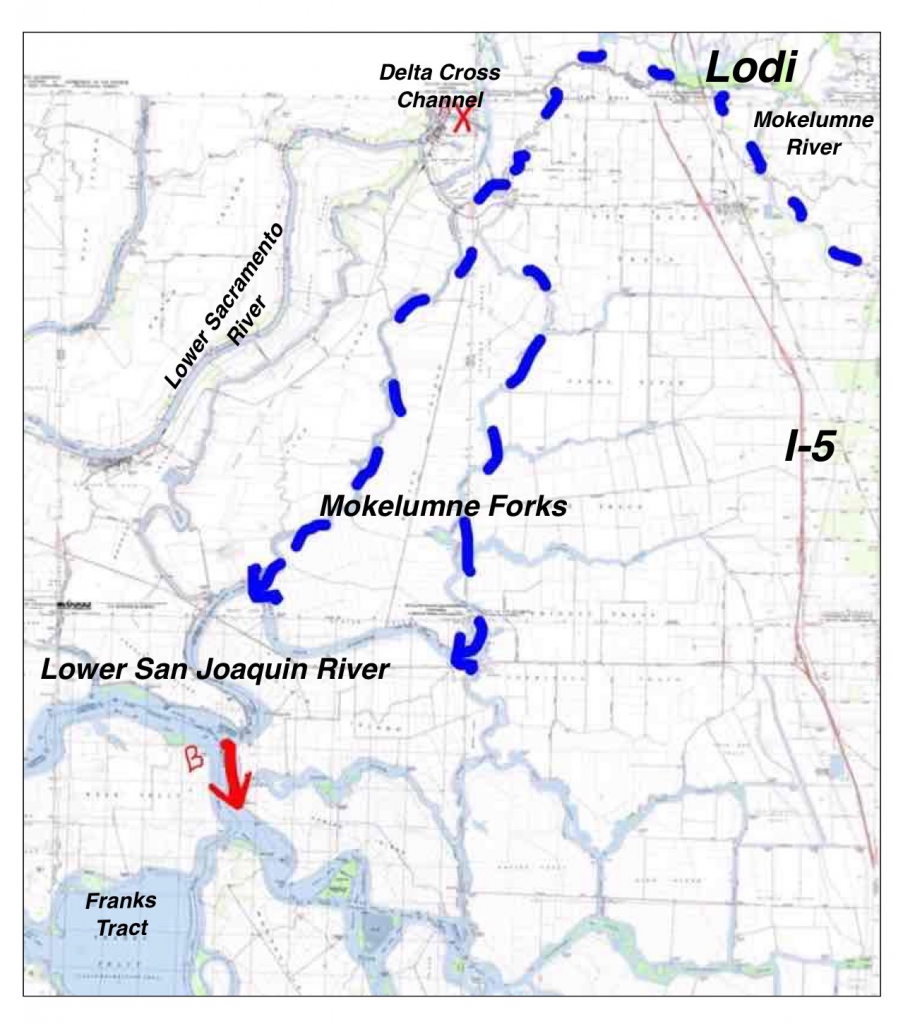The Mokelumne Hatchery releases approximately 100-200 thousand hatchery steelhead to the lower Mokelumne each winter, yet runs remain small with several hundred fish or less. Why is that? The answer is pretty straightforward: the smolts released have little chance to reach the ocean and those that do have little chance finding the Mokelumne on their return as adults.
The figure below depicts the primary causal mechanism. With the Delta Cross Channel closed in winter and spring, the smolts and adults must migrate via the lower San Joaquin River. The problem is that flows in the San Joaquin below the Mokelumne forks are negative in drier years because of Delta exports. The negative flows are shown as the red arrow at Prisoners Point.
Wild and hatchery smolts reaching the San Joaquin follow the river “downstream” to the South Delta export pumps. Many of the approximately 1800 hatchery smolts “salvaged” since February at the export pumping plants are likely Mokelumne hatchery smolts released in February near Lodi.
Likewise, adult steelhead migrating upstream from the Bay into the Delta in winter and spring cannot find the Mokelumne because its water signature in drier years has been taken almost entirely to the South Delta export pumps.
Solutions:
- Hatchery smolts can be barged from the Mokelumne Forks to the upper Bay. Some trucking to the Bay has been attempted in past years.
- Wild smolts can be collected at Woodbridge Dam traps in drier years and transported to the upper Bay.
- Adults returning in winter and spring should be provided olfactory attraction by insuring minimum positive daily average downstream flows in the lower San Joaquin at Prisoners Point and Jersey Point at least for a portion of each month in winter and spring.
- In the long term, spring operations at the Delta export pumps need to be reduced so that outmigrating salmon and steelhead from the San Joaquin basin as well as the Mokelumne follow water from their natal rivers to the Bay, not to the pumps.

